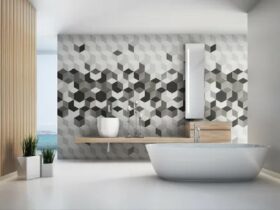Plastering mixtures are divided by binding substances.
Mineral plasters – binder of gypsum, cement, etc.D. Gypsum plasters are not used for facade finishes. Laundice and sand mixtures are suitable for a wall of wood or lime white brick. But completely unsuitable for reinforced concrete or basement of the building.
Cement plaster – inexpensive coatings with high vapor permeability. They are suitable for walls of brick or concrete. To give greater elasticity, polymers are added to cement plaster, which prevents the appearance of shrinkage cracks. Also to improve the operational properties, and give an attractive appearance, the plastered surface must be painted.
Before proceeding with the facade plaster, the house must be insulated. The insulation of the facade of a wooden house is necessary because any, even the highest quality wood over time begins to pass air. The main thing is not to start insulation of a wooden house immediately after building. The house should “settle down”.
Polymer plasters – based on dispersion of synthetic resins. They have good adhesion to any base materials, there can be different textures and colors. But they fade from sunlight, attract dust and less vapor permeable than mineral.
The basis of silicate plasters is liquid glass. They can be used on a wall made of cellular concrete or other material with high vapor permeability. They are more expensive than mineral, but their color scheme is richer.
Stone “Sprinking” – decorative plasters with granular fillers (crumb of marble or glass, mica, large sand). Grain size 1-4mm in diameter.








